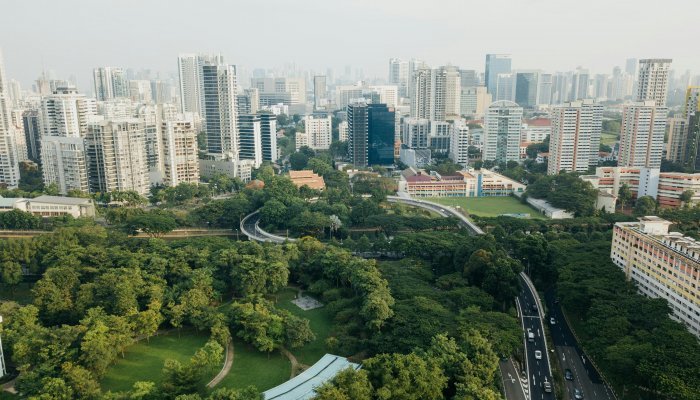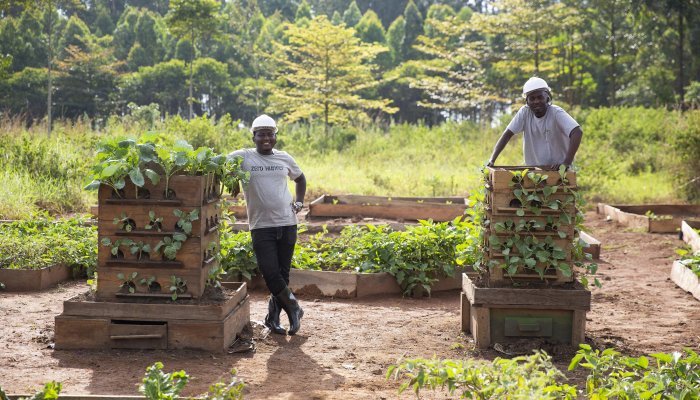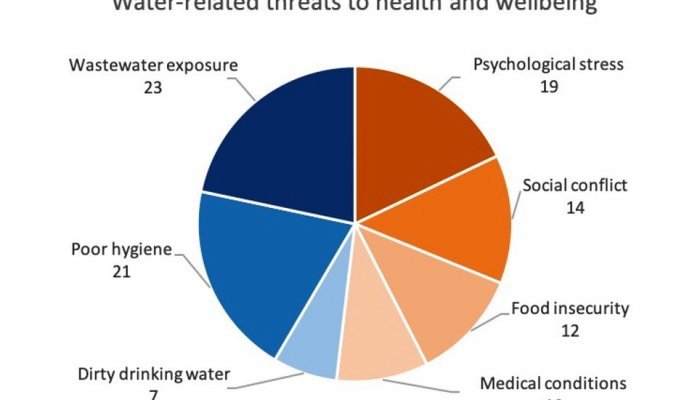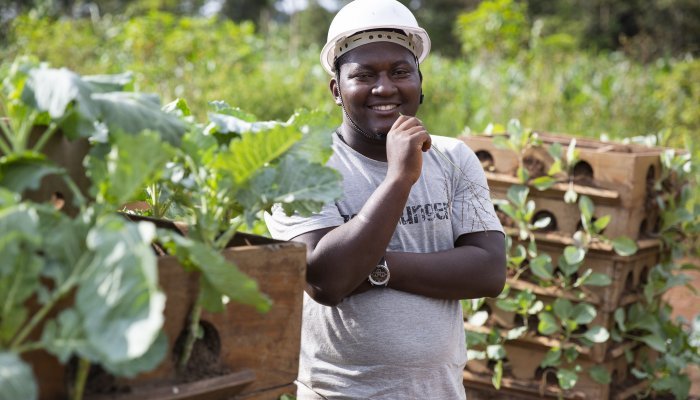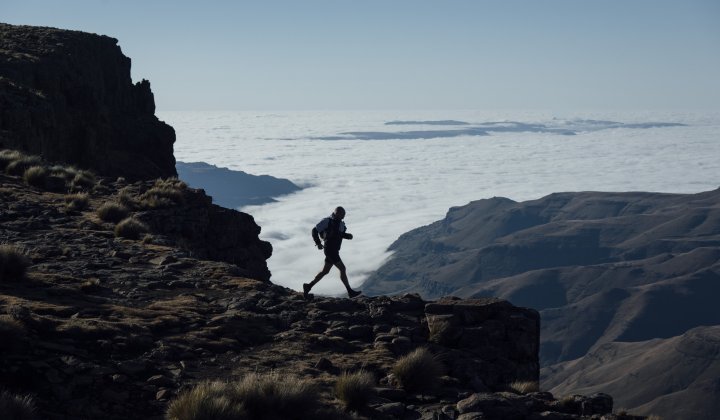As cities continue to experience the "urban heat island" effect and little action is taken to adapt to climate change, this is likely to have consequences on population health and also have a negative effect on infrastructure and service delivery. This is according to the Green Infrastructures in South Africa Cities report that focuses on three South African cities − Cape Town, Johannesburg, and Mangaung – highlighting the importance of local government developing climate change adaptation and mitigation strategies for more climate-resilient cities.
Green infrastructure is a mix of constructed and natural green spaces and ecosystems or cities that integrate vegetation within their designs. These may include parks or green spaces with original or planted indigenous trees, grasslands,or woodlands.
These ecosystems often help regulate temperatures, supply provisions like food, offer recreational support such as parks, and provide a habitat for animals displaced from their natural environment by high-rise buildings. Trees provide clean oxygen for residents while also lowering temperatures by providing shade, especially on paved surfaces.
Dr. Johan Enqvist is a senior research officer in sustainability science with expertise in urban social-ecological systems at the University of Cape Town’s African Climate & Development Initiative (ACDI) and is also a researcher at Stockholm University. One of the projects he is working on delved beyond Cap Town's so-called Day Zero, investigating the ongoing water accessibility issues in low-income areas and informal settlements in Cape Town.
He says that South Africa faces key challenges like rising temperatures and changing weather patterns that result in flooding or droughts.
“We are entering a more unpredictable era. Our cities are built to cope with certain environmental variations (in heat, precipitation, storms)," he says.
“When the climate changes, the risk of overburdening the infrastructure becomes higher. Preparing for any eventuality is very costly, so the cheapest option is to minimise climate change by reducing greenhouse gas emissions.”
Climate change seen through the water crisis
Some climate change is already underway, which requires adaptation to minimise further emissions in cities and surrounding communities. UCT’s ACDI research has been looking at the impact on climate change through the lens of water crises like floods and droughts.
One project that ACDI urban climate adaptation research fellow Dr. Anna Taylor and Dr. Enqvist are researching is water-stressed cities (WSC). The project is focused on how four main African cities − Cape Town, Dodoma, Lagos, and Windhoek − deal with drought risk and water stresses; in particular, how groundwater is used as an adaptation strategy to augment surface water supplies from rivers and dams.
Dr. Enqvist says adaptation strategies depend on the type of climate impact being sought. For instance, water shortage can require clearing of invasive alien vegetation from watersheds to enable dams to fill up more easily, worsened heatwaves can be mitigated by planting more trees in city streets, while storm surge and flooding that threaten coastal areas can be prevented by changing building permits for safety buffers to be incorporated along coastlines and rivers.
“Very importantly, especially for South Africa, we also need to consider inequality in climate adaptation. Cape Town’s apartheid legacy has left many people in low-income areas living on the Cape Flats, which is more prone to winter flooding than the slopes of Table Mountain,” says Dr. Enqvist.
But how is South Africa faring on the implementation of green infrastructure policies? According to Dr. Taylor, South African policies around climate change in urban areas are not being implemented fast enough. “It can be accelerated with more resourcing, stronger political will, more inclusive planning and implementation, better learning from experiments and innovative practices,” she says.
How to achieve greener cities
Dr. Taylor says it’s possible to have sustainable green cities but points out that there isn’t an existing blueprint for green cities to follow.
“It will require pretty radical changes to how our cities currently function. We have to experiment and work out what combination of factors can work well in each context.
“We know it will include rehabilitating the functioning of wetlands, rivers, estuaries and dunes, with associated work opportunities. It includes architecting buildings to use less concrete, regulate temperature better and absorb more water,” says Dr Taylor.
She adds that this will require reconfiguring urban spaces to reduce the use of motorised transport, meaning residents must live, work, school, shop, and access services in closer proximity to their homes, which will need a well-connected public transportation system.
“It will involve massively reducing waste by reusing and repurposing materials, including nutrients. This requires getting the right mix of private sector innovation, especially among local SMMEs, and state incentives and regulation,” says. Dr Taylor
Successful climate adaptation strategies available to South Africa
- Diversifying water sources
- Creating buffer zones along rivers and coastline
- Protecting and expanding the network of green open spaces
- Retrofitting drainage infrastructure to increase infiltration
- Clearing invasive alien vegetation from catchments
- Recycling wastewater
- Setting up trusted early warning systems linked to proactive disaster risk reduction plans
- Investing in monitoring networks
How you can play your part in the adaptation and mitigation of climate change
- Carpool to work or work remotely some parts of the week.
- Shift your consumption, decrease frequency of shopping by buying things that last longer.
- Get to know your neighbours so you can help each other out when the heat, storms or water shortages come.
- Inform yourself about flood risk when looking for new places to live.
- Be extra careful not to cause wildfires or around fires in general during Cape Town’s hot, dry and windy summer months.
- Lobby your local politicians to implement climate change adaptation and mitigation strategies.
- Walk more, eat more locally sourced food and less meat.
- Use less water.
- Improve the insulation in your home.
- Reduce outdoor paving and plant water-wise plants.
- Harvest rainwater from your roof.
- Separate out your recycling and drop it off or use a collection service.
- Separate out food and garden waste and take it to your nearest composting initiative.
- Create, join or donate to a community group that is cleaning up and looking after your closest park, stream, river and beach.
- Don’t buy items you don’t need.
Vertical gardens: Making small spaces green
One way to drive climate change mitigation is through vertical gardens or farms. Acumen spoke to social entrepreneur Paul Matovu, founder of Vertical and Micro Gardening (VMG).
VMG uses the concept of vertical farming. What is it and how does it work?
Primarily, VMG promotes vertical farming through designing, developing, and selling our flagship product dubbed the Vertical Farm. It is important to note that, unlike the very advanced vertical farming systems in the Western world, our concept of the Vertical Farm promotes decentralisation of urban farming by giving urban households the power and ability to grow their food on the limited available spaces at their disposal.
VMG’s Vertical Farm creates tiers of soil beds on 3x3ft of land to grow up to $1 600 of yearly produce. It also has a central chamber where users recycle their organic waste to create fertiliser to place on the soil beds. This gives users the autonomy to choose what they want to grow and eat, and means they’ll be eating fresh, healthy vegetables.
With increasingly high unemployment rates, is it possible for ordinary people with limited space to make a sustainable living from vertical farming?
Our vertical farms give people in land-constrained places the power to grow their own food. A user of VMG’s Vertical Farm can earn a living by selling the surplus harvest and selling worms or worm castings harvested from the vermicomposting chamber of the Vertical Farm. A user can earn up to $1 600 worth of harvest a year.
Why do you think it’s important to have gardens to grow fruits and vegetables, even within cities?
Urban farming in general enables urban dwellers of any class to grow food for various reasons. To the low-income urban dweller, growing their food, vegetables, and fruits enhances their food security. We all know that urban economies are cash-strapped and therefore people without money can easily go hungry. If you grow food in your backyard, it means that your chances of going to bed hungry are reduced.
Moreover, growing high-value crops can be a feasible source of income for the low-income earner in the city. Besides reducing food miles, having a vertical farm in someone’s home has uncountable social and environmental benefits, including reducing methane emissions through vermicomposting and carbon sequestration by the plants.
Practical steps people with small spaces can take to start their own vertical garden
- Where necessary (for tenants), inform your landlord and check if farming is allowed on the property.
- Understand your personal farming needs − is it for nutrition, food security, or income generation?
- Some of the easiest crops novice urban farmers can start growing include spinach, kale, amaranthus, onions, eggplants, green pepper, coriander, mint, arugula, and pak choi.
- Since VMG’s Vertical Farms are outdoors and exposed to natural weather conditions during the dry season, water the crops at least every morning before sunrise.


